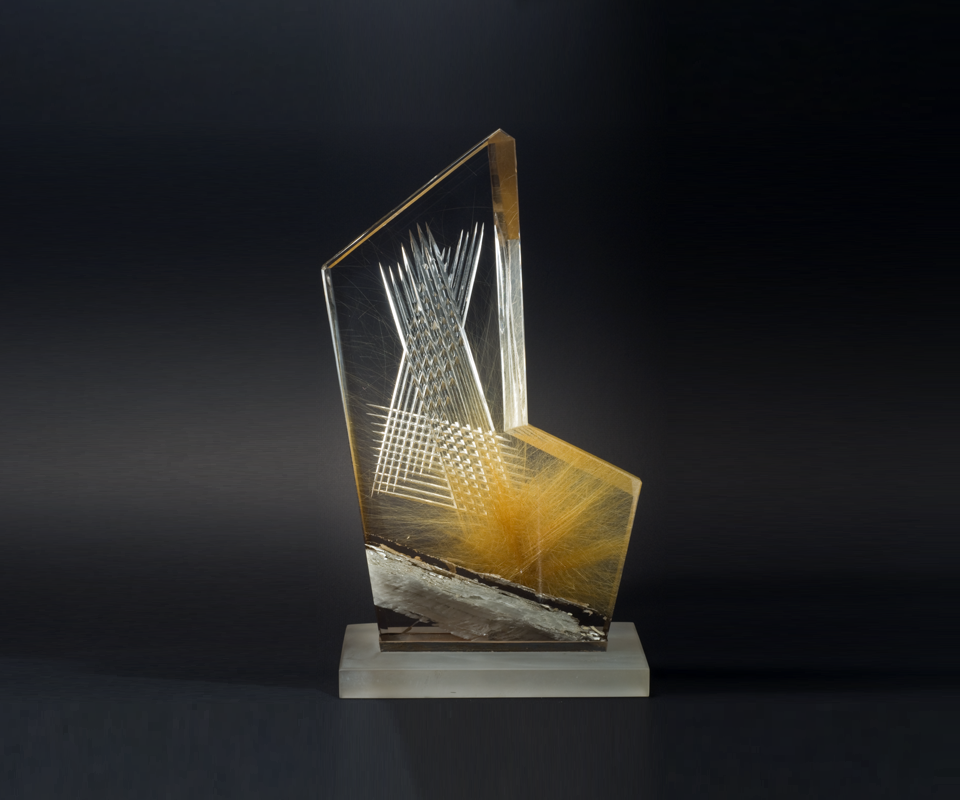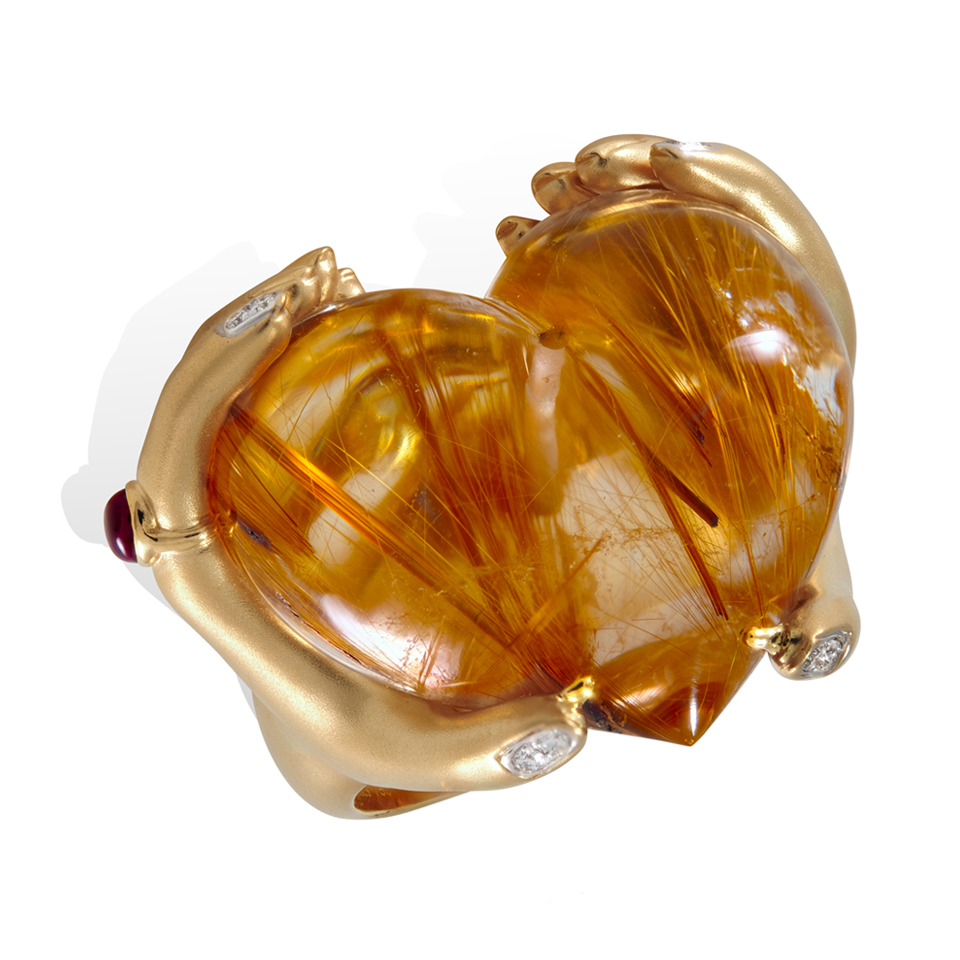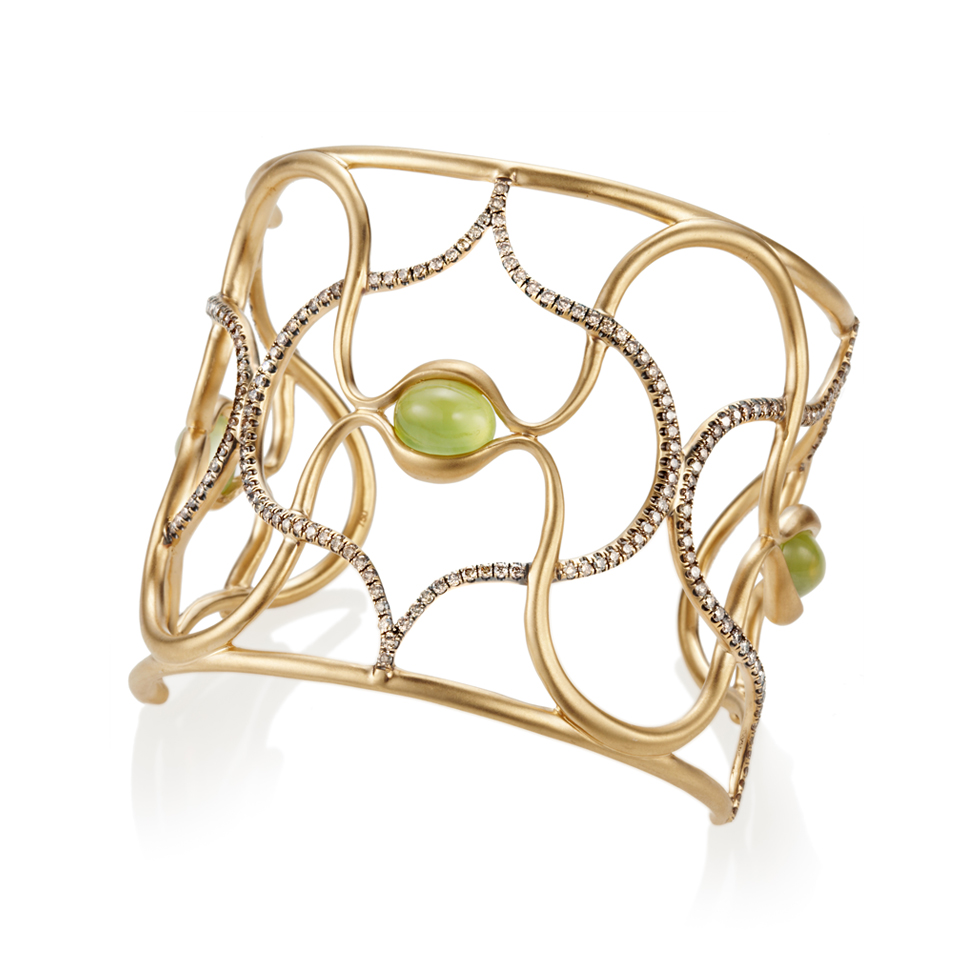We’re always on the lookout for trends, and we spotted a fun one. Several gemstones that never had much cachet are now in vogue. These beauties have been showing up on the runway and in fashion magazines.
Rutilated Quartz
Rutilated quartz is colorless rock crystal quartz with inclusions of rutile, a titanium mineral. Each gemstone has a unique medley of inclusions of wispy needles, rods, and clusters. Yellowish orange, orangy red, and brown are some of the most common colors.
Rutilated quartz was popular in jewelry in the 19th century, and regained prominence in the latter half of the 20th century when Bernd Munsteiner and other gemstone cutters created innovative faceting styles (called fantasy cuts) in their groundbreaking creations.

Bernd Munsteiner innovative style is on full display in Metamorphosis III, a sculpture made out of a large piece of rutilated quartz. Photo by Robert Weldon/GIA

Creativity abounds in Lydia Courteille‘s “Bague” ring: 18K gold hands cradle a 52.65 ct rutilated quartz. Delightful details in the mounting include fingernails embellished with diamonds and a 0.16 ct ruby ring on the left index finger. Photo courtesy D’Orazio and Associates
Peruvian Opal
Mined high in the Andes, Peruvian opal comes in colors ranging from pale green to vivid blue. The gemstone has no play-of-color like many opals, but the body color can be extremely rich. Many of the Andean mines are thought to be nearly exhausted, so fine specimens of Peruvian opal are increasingly rare. It’s not as durable as most other gems, so be mindful when you wear it.
Dendritic Agate
Look at a piece of dendritic agate, and you may think you are gazing at a wintry forest scene, the silhouette of a solitary tree, or an ancient fern. These austere landscapes were actually created by minute particles of iron or manganese oxides that seeped into cracks in the agate when it was forming. Mother Nature shows her endless ingenuity: every piece is unique.

Jewelry designer Lilly Fitzgerald framed a dramatic dendritic agate from India in a 22K gold brooch. What you don’t see: the back of the piece has four small cultured pearls. Photo courtesy of 1stdibs.com
Labradorite
Labradorite is a type of feldspar, a mineral group with a humble name: it means “field stone” in German. But gem-quality labradorite is anything but common. It is a phenomenal gemstone, which means it displays a delightful optical property. When light strikes its surface, it exhibits areas with bright flashes of color (blue is the most common color) caused by light interacting with thin layers in the stone.

These 18K white gold cuff links by Anahita Jewelry, sport oval labradorite cabochons, 36 carat total weight. Photo courtesy of Anahita Jewelry
Prehnite
Prehnite is a silicate and its color is usually a light green to yellow-green. A hazy or misty appearance gives it a dreamlike quality. Prehnite is named after Colonel Hendrik von Prehn (1733 – 1785) who discovered the material in South Africa. It is found in a variety of countries, with Western Australia being the primary source for the gemstone.

Anahita Jewelry crafted an 18K gold cuff bracelet with pavé set brown diamonds, 3.50 ct total weight and prehnite cabochons, 10.27 ct total weight. Negative space brings life and energy to the design. Photo courtesy of Anahita Jewelry
Now you know of a few new gemstones that can add some style to your wardrobe. Wear them to your next party, and get ready for the compliments.
Main Image courtesy of 1stdibs.com.

